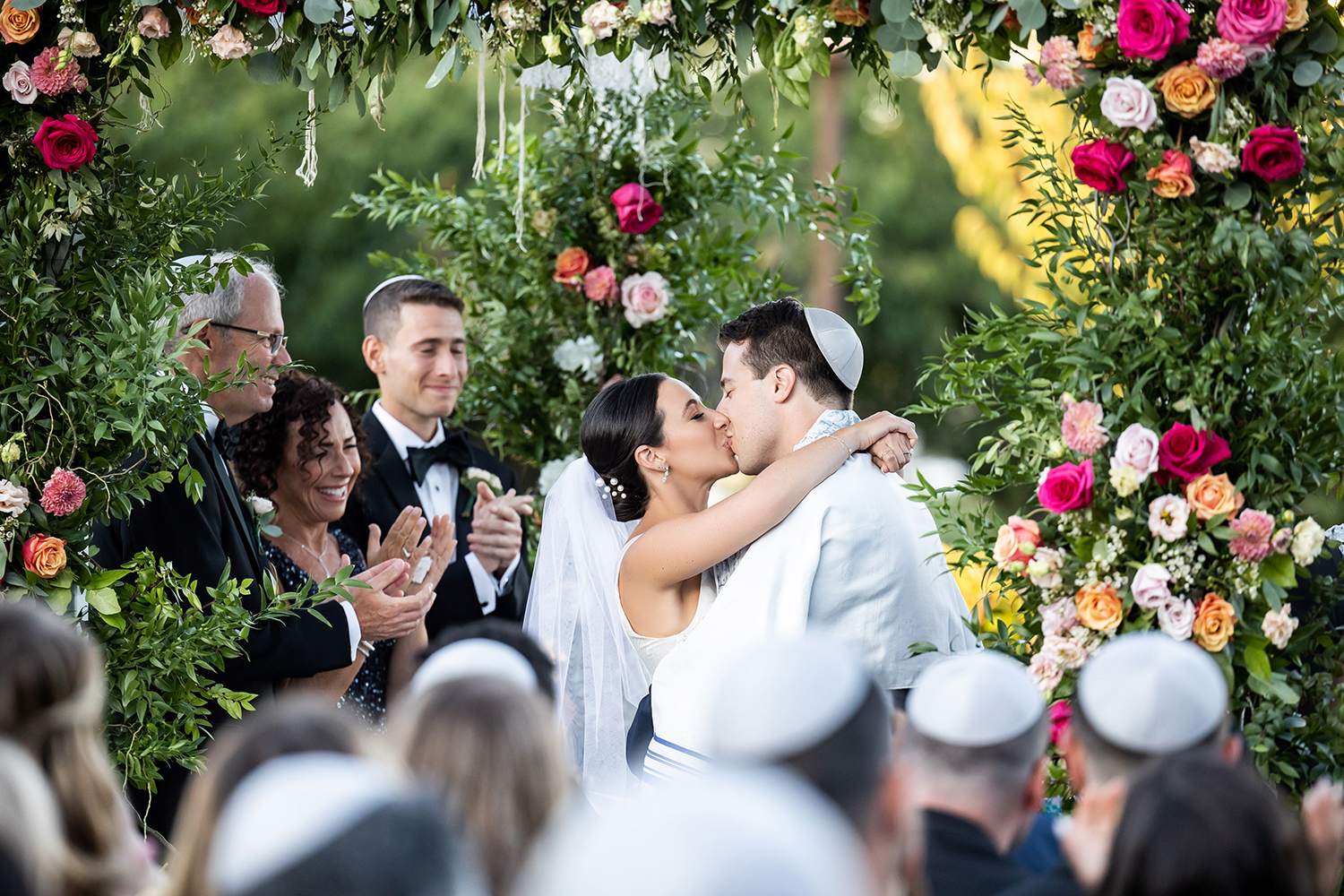As New York Wedding photographers, you can bet we have seen our fair share of Jewish weddings. We have been fortunate to photograph weddings from all faiths and cultures. We wanted to share some insight into these beautiful traditions and some of our wedding photography work to accompany the descriptions.
Jewish weddings are rich in traditions, symbolisms, and rituals that reflect the cultural and religious heritage of the Jewish people. Here are 10 common Jewish wedding traditions:
-
Kabbalat Panim (Reception):
Before the ceremony, there is often a reception where the bride and groom greet guests separately. This is a time for well-wishing and blessings.

-
Bedeken (Veiling of the Bride)
The groom, accompanied by male family members and friends, veils the bride to symbolize his commitment to clothe and protect her. This tradition is based on the biblical story of Jacob being veiled when marrying Rachel.

-
Tisch
During a Jewish wedding, the term “tisch” specifically refers to the groom’s reception. It is a lively event where the groom, surrounded by family and friends, participates in rituals, sings, and shares words of Torah and inspiration.

-
Ketubah Signing
The ketubah is a Jewish marriage contract outlining the rights and responsibilities of the groom to the bride. It is signed by the couple, witnesses, and often displayed during the ceremony.

-
Chuppah (Canopy)
The ceremony takes place under a canopy known as the chuppah, symbolizing the new home the couple is creating together. The open sides signify hospitality and the presence of God.

-
Circling the Groom
The bride traditionally circles the groom seven times under the chuppah, symbolizing the creation of a new family and the walls of their home.

-
Breaking of the Glass
At the end of the ceremony, the groom breaks a glass with his foot. It symbolizes the destruction of the Temple in Jerusalem, thus serves as a reminder of the fragility of life, and can also symbolize the irreversible nature of the marriage covenant.

-
Mizinke
The Mizinke is a traditional Jewish dance customarily performed during a wedding celebration, specifically for the parents who have married off their last unmarried child. The term “Mizinke” is Yiddish and translates to “sweetening” or “making pleasant.” This dance is a joyous and emotional expression of gratitude and celebration for the parents, marking the completion of their parental duties in marrying off all their children. The parents are often seated in chairs and are honored with dances, songs, and well-wishes from family and friends, making it a heartfelt and memorable part of the wedding festivities. Wedding photo retouching
.
-
Hamotzi
In a Jewish wedding ceremony, the Hamotzi blessing is often recited before the wedding meal or reception. This blessing is said over the bread, symbolizing the beginning of the festive meal shared by the newlyweds and their guests. The Hamotzi at a wedding serves as a reminder of the importance of sustenance, community, and celebration within the context of the marriage covenant.

-
Hora
Jewish weddings are known for their lively dancing, music, and celebrations. The hora, which is a circle dance, is a particularly joyous and popular tradition.

It’s important to note that customs can vary among different Jewish communities. Therefore, not all Jewish weddings incorporate every tradition listed here. Additionally, some couples may choose to put their own personal spin on these traditions.
We have captured numerous Jewish wedding traditions through our lenses. We are here to address any questions you might have or immortalize your special day in timeless photos and videos.
Schedule a call with us today to discuss how we can capture your beautiful Jewish Wedding!
